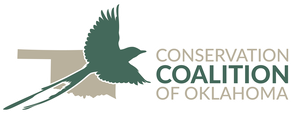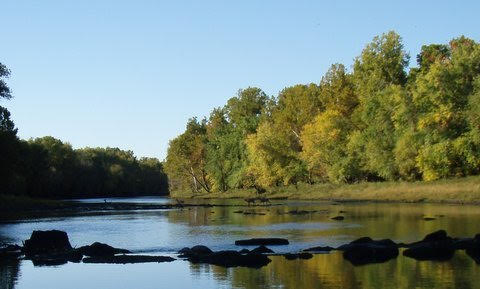Stakeholders argue against long studied 55%-or-greater flow definitionBy KELLY BOSTIAN
For the CCOF The Oklahoma Water Resources Board adopted proposed changes to water quality monitoring standards for the Illinois River watershed in its Tuesday meeting, but one key proposed change failed to clear the public comments hurdle. The proposed standards involved Chapters 45 and 46 of the state’s Water Quality Standards and were fashioned according to recommendations of the 2018 Oklahoma-Arkansas Joint Agreement. The goal is controlling phosphorus concentrations in the sensitive Scenic Rivers of the Upper Illinois and its Flint Creek and Barren Fork tributaries. Water quality criteria are laid out in Chapter 45 and the means to assess whether those criteria are supported appear in Chapter 46. The board voted on changes to each chapter. Water Quality Programs Division Director Bill Cauthron told board members the new Chapter 45 Water Quality Standard for streams would not change from a maximum phosphorous concentration of 0.037 ppm. However, the new rules look at that standard on a 6-month rolling average that is not to be exceeded more than once a year or three times in a five-year period. Previously data looked at a 30-day geometric mean with zero exceedances allowed. OWRB staff have noted the rolling average was more scientifically sound and consistent with standard practices across agencies, and that the zero-exceedances rule was not realistic. The rolling average allows regulatory flexibility without sacrificing water quality, staff noted. Cauthron told board members the new rules under Chapter 46 called for the 6-month average to include readings from at least five of the preceding months and at least four values from four of those months. It also calls for OWRB to eye a minimum of 10 rolling 6-month means per year. Missing from the changes proposed for Chapter 46 last September was a new concept that came at the recommendation of the Joint Agreement; that the standards be based on a “Critical Condition.” While the two-state agreement recommended “critical condition” the term was not specifically defined beyond stating it was “the conditions where surface runoff is not the dominant influence of total flow and stream ecosystem processes,” said Rebecca Veiga Nascimento, environmental program manager for OWRB. The OWRB worked “extensively” with the Arkansas Department of Environmental Quality, federal and tribal stakeholders for nearly two years to develop a scientific and regulatory viable definition for the term, Nascimento said. The group’s analysis led to a definition that critical condition would be defined as, “when base flow is 55% or greater of the total daily average flow” calculated by analysis of in-river gauge readings, she said. But nearly all written comments on the proposal from 20 organizations questioned the new definition, with lengthy argument from the Arkansas Farm Bureau, the Arkansas Department of Energy & Environment, the Arkansas Department of Agriculture, as well as the Oklahoma House of Representatives, Oklahoma Farm Bureau and the Poultry Council. Those organizations claimed the standard did not match what was used with studies that confirmed the 0.037ppm standard and so were not true to the Joint Agreement. Conservation groups Save The Illinois River and Trout Unlimited were skeptical the new standard might not fully represent how much phosphorous the upper rivers deliver to Lake Tenkiller. Nascimento said water quality monitoring will not be hurt by the decision and that the department will continue without the proposed 55-percent-or-greater condition in effect. Data will simply, potentially, include measurements from a wider range of flows. “It’s entirely possible to move forward without the critical conditions right now,” she said. “We feel pretty confident that we are going to continue to have a robust dataset to evaluate both the phosphorous concentration and the phosphorous loading the Illinois River Watershed.” Stakeholders wishing to correspond on the matter are asked to email [email protected]. Kelly Bostian is a conservation communications professional working with the Conservation Coalition of Oklahoma Foundation, a 501c3 non-profit dedicated to education and outreach on conservation issues facing Oklahomans. To support Kelly’s work please consider making a tax-deductible donation at https://www.oklahomaconservation.org
0 Comments
Leave a Reply. |
Archives
May 2024
Categories
All
|
Conservation Coalition of Oklahoma
P.O. Box 2751
Oklahoma City, OK 73101
[email protected]



